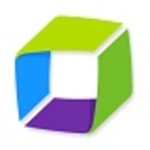My company uses Wazuh in our lab environment, where we have 100 endpoints.
The tool does not provide CTI to monitor darknet. In the future, I want the tool to provide CTI to monitor the darknet so that by creating a single query, I can monitor the darknet.
I have been using Wazuh for a year. I am an end user of the solution.
Stability-wise, I rate the solution a five or six out of ten.
My company has a problem with the stability of the product because we don't have a high-availability architecture. The fact that my company does not have a high availability architecture might be our company's problem.
Around three security operators in my company use the product.
Though I want the use of the product to be increased in the company, the decision to do so lies in the hands of the management.
I have not contacted the tool's support team. If my company contacts the product's support team, it would be easier for our company to deal with the product's areas like deployment and usage. In the upcoming year, I would like to use the commercial tech support offered by the product.
Previously, I have used IBM QRadar, SentinelOne, and Splunk, which were all very expensive products.
My company started to use Wazuh considering its low prices compared to other solutions.
I rate the product's initial setup phase an eight or nine on a scale of one to ten, where one is difficult, and ten is easy. Wazuh is a very simple tool.
The solution is deployed on a private cloud.
It is difficult to comment on how much time is required to deploy the product since there is always a need to add new log sources and integration. The solution can be deployed in a few days so that the testing phase can be carried out.
Wazuh is a cheaply priced product.
The product has been implemented in my company's environment for threat direction straight out of the box through a simple implementation process.
My company uses the product for threat detection and to create and tune playbooks with roles. My company uses the product in our lab environment, so it's not used for production, which makes it easier for us to deal with the tuning part of the product.
The product helps our company's ability to comply with industry standards since we use the CIS benchmark for hardening GDPR compliance.
My company uses the product for event analysis. My company uses Wazuh as a SIEM solution.
My company uses the product for many of our use cases, and we also deal with the configuration part of the tool. My company is trying to tune the product, and it is possible to use it for event analysis with Wazuh. The product is effective in terms of event analysis.
The integration capabilities of the product with other tools, like FortiGate and NetFlow, are good.
More time is required for me to be able to see how the product's scalability can impact our company's environment.
The product is easy to customize. The product provides good setup documentation regarding the language to be used to use the product's customization abilities. The product offers a good level of documentation along with a good online community. On the internet, it is easier to get information about any problem or issue users face with the tool.
I recommend the product be used in a team with fewer members for security operations. The tool can be used if you work in areas like security and administration, where it can be easily used and implemented.
I rate the tool an eight out of ten.























